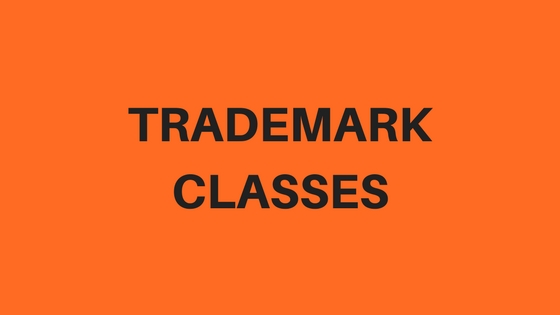When applying for a US trademark, you must specify the kind of products or services for which your trademark will be used. Learn more about trademark classes and why it’s critical to choose the right one.

If you’ve been investigating how to trademark your company name, logo, or other intellectual property, you may have heard that when you register a trademark with the United States Patent and Trademark Office, you must choose a class of products or services.
These trademark classes are significant since your trademark registration will only protect your trademark in the class that you choose on your application. Trademark classes might be difficult to grasp. There are many of them, and it isn’t always clear where your product or service belongs in.
The USPTO trademark categorization system categorises all commodities and services into 45 trademark classes, including 34 for goods and 11 for services. Each class has a wide range of products and services, which are not necessarily clear from the class name. Aprons, dresses, t-shirts, socks, and shoes, for example, are included in class 25 (clothing). Class 29 (meat, fish, poultry) has meat and milk, but also jam and potato chips, while class 30 (coffee, wheat, rice) contains popcorn, spices, ice cream, and cereal in addition to coffee.
Goods and services are never included in the same category. So, if you sell bags of coffee to grocery shops, you’re offering a class 30 product. However, if you own a café, you are offering a service that falls under class 43. (food services). Depending on your company (for example, if you sell roasted beans in your coffee shop), you may need to register in both courses.
When you submit your trademark application, you must specify the class of products or services that your trademark will protect, as well as the goods or services that you provide. Your trademark application will only cover the products, services, and classes that you specify in your application.
Assume you create handmade tables and chairs and register your trademark in class 20, for furniture. If you then start creating wooden serving spoons, your trademark will no longer protect them since they fall into a new class – class 21, for domestic utensils. You’ll need to submit a separate trademark application to protect your spoons.
Trademark categorization has two purposes: it acts as a guideline for trademark registration and it may assist you in identifying possible trademark infringers.
The USPTO will not register a trademark that is confusingly similar to an existing registered mark. The markings must be comparable in order to be confusingly similar. They must also apply to related products or services, so that a customer is not confused about where the source is. Because the items are so dissimilar that no one would suppose they originated from the same source, “Dove” ice cream bars and “Dove” soap may both be registered trademarks.
The trademark office uses the class and description of a product or service to locate comparable marks that have been registered for related products or services. A comparable mark in your class, on the other hand, will not necessarily invalidate your trademark registration if the items are unrelated. Cosmetics and cleansers, for example, are both in class 2, but no one would believe that fake eyelashes and toilet bowl cleaning originated from the same source.
Concurrently, items or services from various categories may seem to be confusingly similar. For example, in class 29, potato chips may seem confusingly similar to popcorn or a cereal-based snack meal in class 30.
Trademark classes, in addition to assisting with the registration process, make it simpler for registered trademark owners to search for and monitor new trademark applications, as well as identify possible infringers.
If you choose the incorrect trademark class, the trademark office may refuse your registration and you will not get a refund of your registration cost. That implies that picking the incorrect class might cost you hundreds of dollars and months of time.
Choosing the incorrect class might potentially get you in hot water when your trademark is registered. If you use your mark for a class of products or services for which it is not registered, you may unintentionally infringe on someone else’s registered trademark. Alternatively, the USPTO might allow a rival to register a similar mark in the class you should have filed in, granting them superior trademark rights in that class to yours.
If you discover that you registered your trademark in the incorrect class, you cannot change it afterwards. You also can’t flip between products and services. You will have to start anew with a fresh trademark registration.
Choosing the suitable trademark class is critical, but it is not always straightforward. Conducting a trademark search may assist you in determining how comparable items or services have been classed, as well as locating any registered marks that may be confusingly similar to your mark. If you want extra assistance, you should consult with a trademark attorney.
